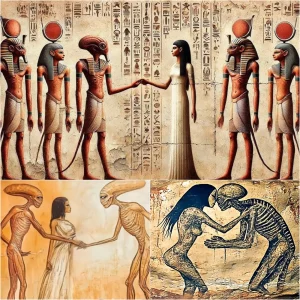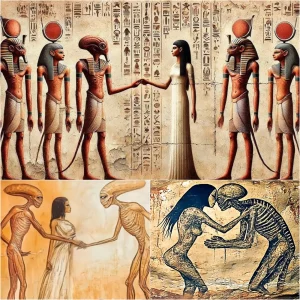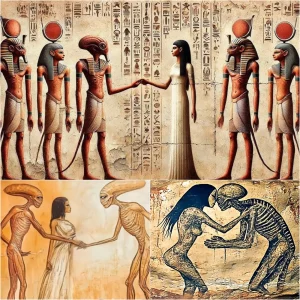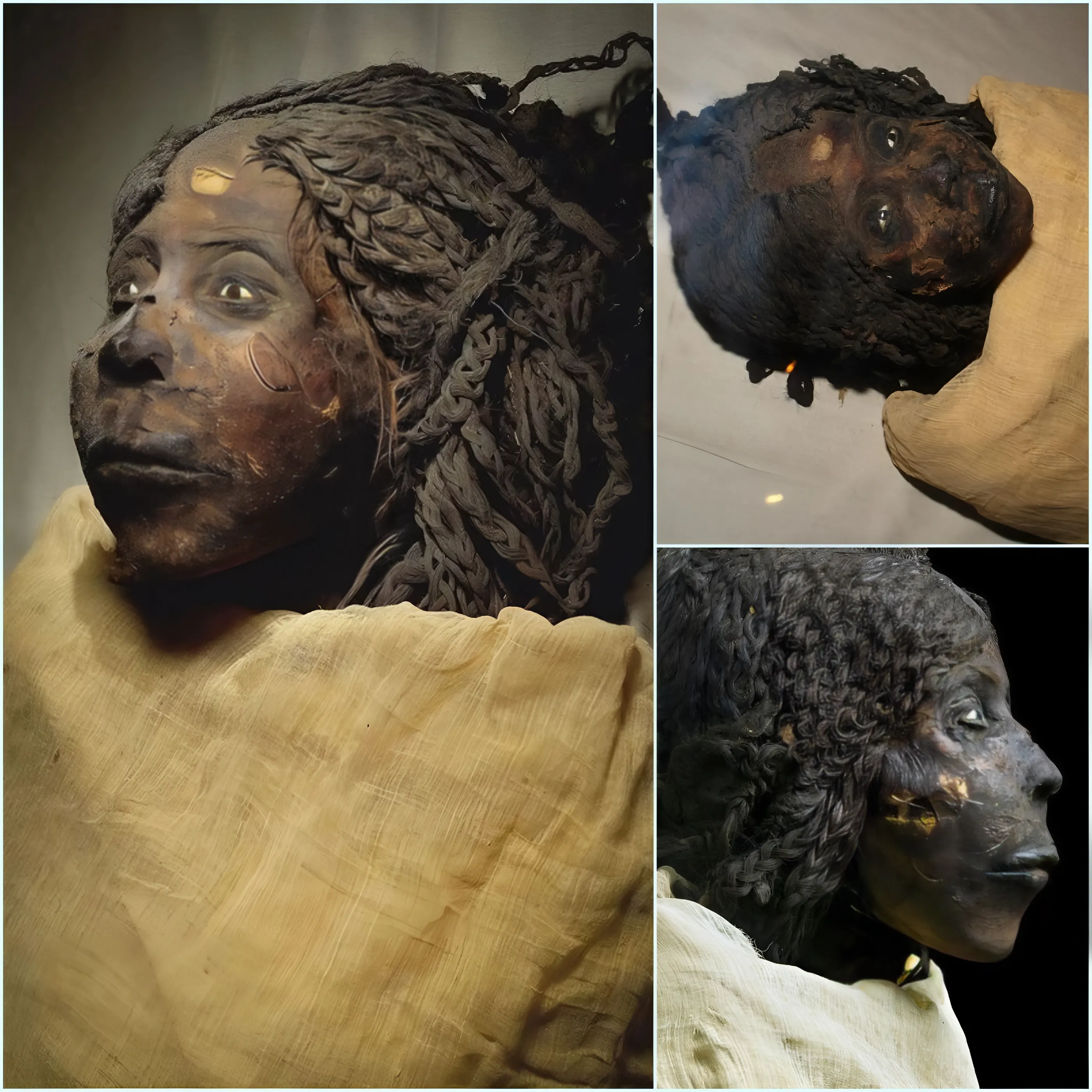
The mummy of Queen Nodjmet, discovered in the Deir el-Bahari Royal Cachette (DB320), was adorned with artificial eyes made from white and black stones. Her eyebrows were crafted from real hair, and she wore a wig. To enhance her appearance, her body and parts of her face were colored, giving her a more lifelike appearance.
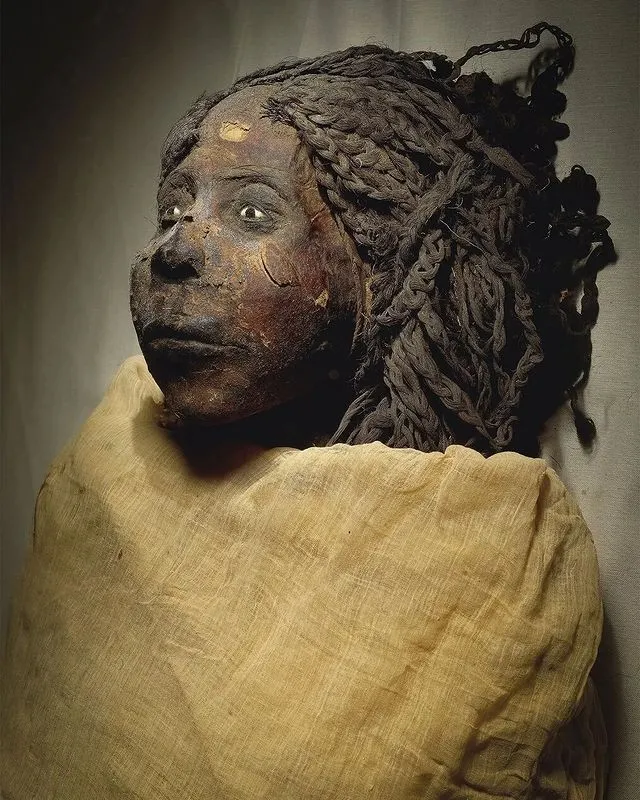
Nodjmet was a prominent figure in ancient Egypt, identified as a noble lady and possibly a Queen during the late 20th Dynasty or early 21st Dynasty. She was the wife of Herihor, who served as the High Priest of Amun at Thebes. There is speculation that she may have been the daughter of Ramesses XI. Early in her life, Nodjmet held prestigious titles such as Lady of the House and Chief of the Harem of Amun.
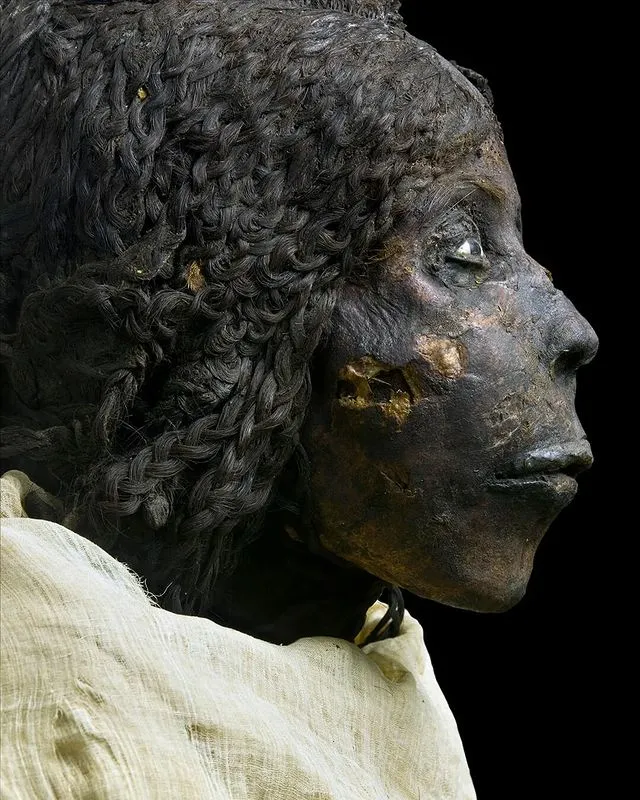
Among her burial goods, two Books of the Dead were found alongside her mummy. One of these, known as Papyrus (EA10490), is now housed in the British Museum. It is inscribed with the name “the King’s Mother Nodjmet, the daughter of the King’s Mother Hrere,” shedding light on her familial and royal connections in ancient Egyptian society.


